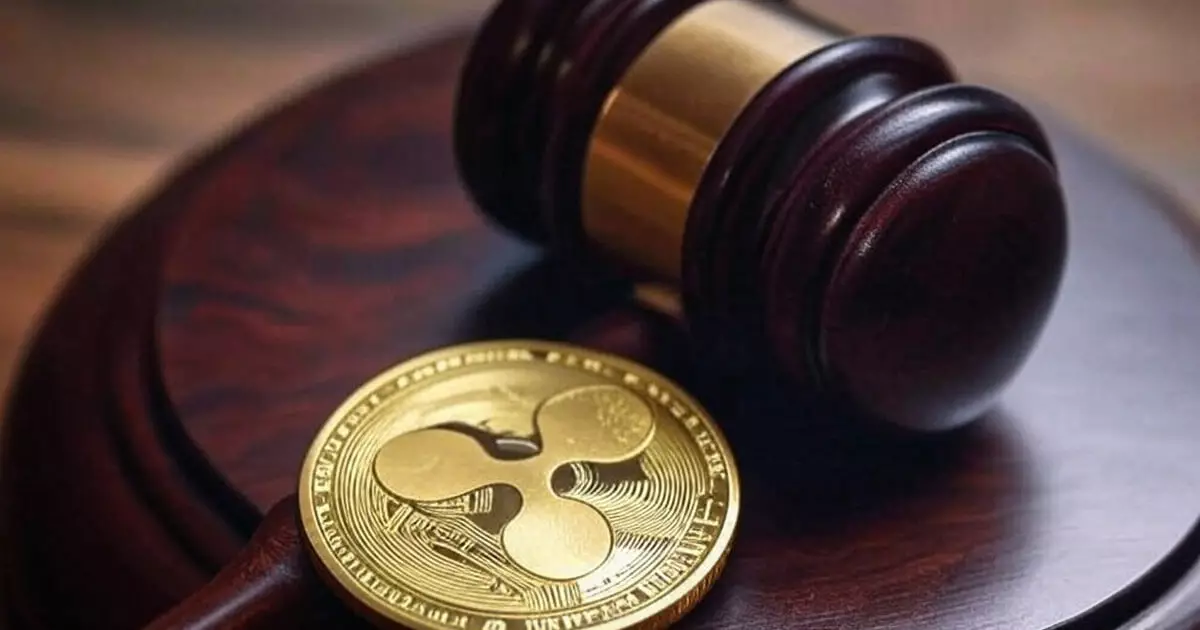When Ripple Labs announced its proposed settlement agreement with the U.S. Securities and Exchange Commission (SEC), it wasn’t merely another case of a tech company minimizing penalties; it was a high-stakes intersection of innovation and stringent regulation. The proposed settlement indicates a notable shift in the SEC’s approach to the cryptocurrency industry. Historically, this regulatory body has been characterized by its vigilance and often aggressive posture toward digital currencies. Yet, this agreement suggests a newfound willingness to negotiate and prioritize ongoing innovation in an industry that is burgeoning, but still operating in legal gray areas.
The decision to settle for $50 million—a significantly reduced amount compared to the original $125 million in penalties requested—highlights the complexities and challenges faced by regulatory bodies when grappling with rapidly evolving technologies. It raises the question of whether the SEC is acknowledging that its aggressive tactics may halt the nuanced growth of digital finance, which, while fraught with risks, offers immense potential for innovation.
Ripple’s Resilience Amidst Legal Turbulence
Ripple’s journey has been anything but smooth since the SEC’s civil enforcement action commenced in December 2020, bordering on a tumultuous saga characterized by legal battles, counterclaims, and appeals. Leaders like CEO Brad Garlinghouse and Executive Chairman Chris Larsen exemplified resilience in the face of adversity. Their situation reflects not only individual fortitude but also broader implications for the entire crypto sector—how far individuals and companies are willing to go to defend their interests against arguably excessive regulatory scrutiny.
While the SEC has leveraged its position to question the legality of Ripple’s XRP token sales categorizing them as unregistered securities, Ripple’s steadfastness under pressure has arguably galvanized support within the crypto community. This sentiment resonates with the belief in self-regulation and decentralization, essential tenets of the crypto ethos that stand in stark contrast to governmental authoritarianism. It forces a reevaluation of whether regulation can be both flexible and effective without stifling innovation.
Legal Precedent vs. Regulatory Discretion
The SEC’s emphasis that this settlement does not serve as a precedent might be viewed skeptically. The cryptocurrency space is built on foundational principles of decentralization and individual autonomy, and the implications of the Ripple case extend far beyond the company itself. A settlement like this alters the landscape, hinting at how future regulatory frameworks might evolve to accommodate innovative technologies that disrupt traditional financial systems.
Moreover, the SEC’s distinction between this case and others bolsters the notion of regulatory discretion—an ambiguous concept that may lead to selective enforcement practices. The nuance suggests that while the SEC can act as a gatekeeper, it may also recognize the need for fostering an environment where new financial technologies can thrive amid legality.
Financial Implications for All Stakeholders
Looking ahead, the financial implications of this settlement extend well beyond Ripple. By agreeing to pay a reduced civil penalty and releasing escrowed funds, Ripple secures not just its own financial future but also bolsters investor confidence in XRP and the broader market. This represents a crucial affirmation for other companies operating in compliance and innovation symbiosis.
However, an undercurrent remains: what does this mean for investors, many of whom have faced instability surrounding XRP’s classification? The perceptions formed by these legal battles often affect market sentiment, thus influencing financial trajectories for numerous stakeholders. The ripple effects (pun intended) can be seen throughout the industry, and stakeholders must reckon with these developing narratives amidst often tumultuous payoffs.
Continuing Conversations Around Regulation
As Ripple anticipates Judge Analisa Torres’s indicative ruling, stakeholders must prepare for a broader dialogue about regulatory directions in the crypto space. This case serves as a reflection of the existing tensions between innovation and regulation—a paradox that has characterized the contemporary economic landscape. While the SEC may consider its regulatory stance, it is crucial to remember the inherent demand for a balanced approach that does not shackle the innovation spirit of cryptocurrency.
In this evolving landscape, companies must hold fast to their vision while navigating through a regulatory maze that, while necessary, risks suffocating the very advancements it aims to oversee. The Ripple settlement, thus, poses a crucial moment of introspection for regulators and innovators alike, urging all parties to strike a delicate balance—a challenge that will define the future of finance.















